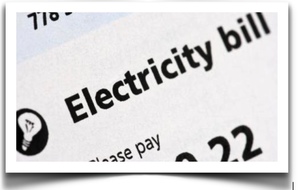|
One of my bills, the Ratepayer Protection Act (SB 1552)
will be heard on Wednesday, Feb. 14th. This bill has several sections designed
to cap costs for Oregon energy users. The bill proposal would help establish
strong, consistent policies aligned with keeping electric rates as low as
possible.
Specifically, one piece of the legislation would prohibit
a public utility from exceeding a 4.5 percent rate of return. Utility Companies
can freely ask the Public Utility Commission (PUC) for rate increases. These
increased payments come from the customers, who are businesses, households,
commercial and industrial users. These ratepayers are the same ones trying to
living within their means with little room to spare.
 The Public Utility Commission exits, first, to “protect
the customers from unjust and unreasonable extractions by establishing fair and
reasonable rates.” (cf. ORS 756). This standard is established by definition,
“Rates are fair and reasonable for the purposes of this subsection if the rates
provide adequate revenue both for operating expenses of the public utility or
telecommunications utility and for capital costs of the utility, with a return
to the equity holder.”
Here is the rub. A small team of political appointees make
up the commission and must exhibit what I call an “unattainable degree of
neutrality.” The problem is in the
presumption that the central planners know or can determine what is “fair and
reasonable.”
|
In free, open and voluntary market economies consumers
determine what are “reasonable and just” value assessments because each
individual makes their own choices about what to buy, or not. There is no
requirement for a neutral party or government entity to “decide” what would be
appropriate because each shopper can buy what they think is appropriate. This
is why gasoline prices are writ large at every service station. People can make
their own choices.
This self-interested, market-driven mechanism is far more
efficient for determining value and setting prices. In actuality, people set
prices not companies. People willingly part with their own money based on their
own understanding of value. Therefore, any accepted price will necessarily be
reasonable because people are buying and selling freely, without any government
or corporate coercion. Agricultural products, our daily bread, meat, dairy,
fruits and vegetables provides the easiest illustration.
We all eat food. The modern grocery store is a testament
to American diversity and ingenuity. Various stores cater to various tastes,
ethnicities and preferences. Each store makes their best effort to service
their customers.
Some individuals prefer organic. Some avoid sugar,
peanuts, or dairy while others can eat anything. It is easy to see that farms
fill these stores by providing a blend of products to service the consumer.
Farming occupies a unique place of importance in all of our lives and the
free-market allows for the diversity and specialization that has fed the world.
The single-supplier electric generation and transmission
franchise necessitates the requirement for a Commission. Once the boundary and
service area (franchise area) are mapped out, no single user can purchase from
any other supplier. Consumers are essentially trapped within the monopoly
boundary and need someone to represent them. The franchisee is in a similar
boat. They too, need to justify their investment matrix, re-capitalization
requirements and cost of service parameters.
SB 1522 does not deny any of the complexities of the
large-scale electric generating enterprise, it simply binds the public utility to
“reasonable” returns.
The bill also prohibits a utility’s Public Purpose Charge
from exceeding 1.5 percent of utility customers’ costs and prohibits the gross
collections, from Public Purpose Charges, from exceeding the 2016 total. It
also limits salaries for Energy Trust of Oregon employees, essentially keeping
them from being greater than the Governor’s salary.
The final section of the bill would stop the collection of
the Klamath Dam removal surcharge from ratepayers’ utility bills. The devil is
always in the details, so here is some background information.
For nearly two decades,
disparate factions struggled to implement their respective irrigation, power
and water-related interests with regard to the Klamath River Basin. Their
efforts resulted in the Klamath Basin Restoration Agreement (KBRA) and the
Klamath Hydroelectric Settlement Agreement (KHSA). These agreements were part
of a major push to remove the four PacifiCorp dams on the Klamath River.
The stage was first set via a 2008, Agreement in
Principle, which compelled the Federal Government to assess the costs and benefits
of dam removal and either designate a non-federal dam removal entity (DRE) to
remove the dams, or “decline to remove the dams at which point
PacifiCorp will return to the Federal Energy Regulatory Commission
(FERC) for relicensing.”
Although a DRE has been designated, Klamath River Renewal
Corp. (KRRC), the KBRA and KHSA agreements have long expired due to
congressional inaction. A third agreement, the Upper Klamath Basin
Comprehensive Agreement (UKBCA) has also been terminated by the DOI.
The time has come for Oregon’s legislature to call the dam
removal effort, whether good or bad, a failure. The agreements have little
chance of being resurrected and it is time to exercise the last clause (above)
where PacifiCorp declines dam removal and returns to FERC for relicensing.
SB 1552 would require PacificCorp to discontinue the
assessment of dam removal surcharges that appear on ratepayers’ electric
bills. Specifically, if the Klamath Dam
removal has not started by Jan. 1, 2019, the dam removal surcharge will be
discontinued, and funds collected by PacifiCorp would be returned pro-rata to
ratepayers with a 4 percent interest on the monies which have been held in
trust.
Additionally, I also have an amendment where the monies
could be used for fish ladders or fish passage alternatives. This would aid in
mitigating PacifiCorp’s main problem with FERC re-licensing requirements.
Alan Mikkelsen, deputy commissioner for the U.S. Bureau of
Reclamation has said BOR will not interfere with the FERC process and believes
the dams will be removed. However, there are still plenty of environmental,
legal and financial hurdles to deal with.
First, is the long-term liability for unknown and known
problems, such as dealing with the 20 million cubic yards of accumulated sediment
that will pollute the river after the dams are removed. Turbidity, water
quality, and long-term fish habitat are all big environmental issues at stake.
Lastly, a host of legal problems associated with the
tentative dam removal agreement between Oregon and California will become
tangled in strategies to find non-federal funding sources. Prior dam removal
cost estimates, for the four dams, range upwards from $950 million and possible funding streams have not yet been identified.
 It’s time to stop the never-ending appearances from our dueling pair of “good
cop/bad cop” protagonists with their endless questioning, changing,
redefining and reinterpreting important issues. The opposing sides are
arguing about what the definition of “is” is, and it should be as plain as the
nose on Pinocchio’s face.
Here’s the straight scoop: Oregon’s hydro-electric power
generation facilities are the most cost-effective base-load power sources for
our state’s growing electric needs. Wisdom demands that we get back to using
real-world economics, science and common-sense to steer Oregon’s natural
resource policies in the right direction.
|
If we don’t stand for rural Oregon values and common-sense – No one will!
Best Regards,
 Dennis Linthicum
Oregon State Senate 28
Capitol Phone: 503-986-1728
Capitol Address: 900 Court St. NE, S-305, Salem, Oregon 97301
Email: sen.DennisLinthicum@oregonlegislature.gov
Website: http://www.oregonlegislature.gov/linthicum
|